TRP Trail Evo Brakes
Reviewer: 6’, 165 lbs / 183 cm, 74.8 kg
Test Location: Washington
Test Duration: 3 months
Blister’s Measured Weight per Brake (uncut hoses, no adapters or rotors): 324 g & 321 g
MSRP: $210 per brake, without rotors or adapters
Bolted to: Nicolai G1 and Guerrilla Gravity Trail Pistol
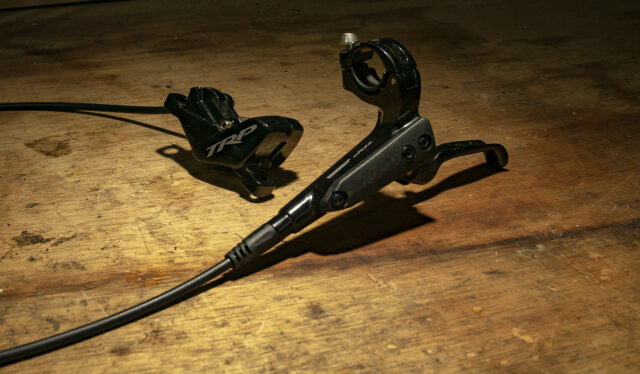
Intro
TRP’s new Trail Evo brakes are meant to be a high-end option for Trail riders who want a quality brake but don’t need the raw power of a true DH option. And for the most part, they deliver on that promise — but there’s a catch.
Design
The Trail Evo actually uses the same caliper as TRP’s top-of-the-line DH-R Evo brake, albeit with a black painted finish instead of being polished and anodized. The design is a two-piece, four-piston caliper with 16mm pistons. And like all of TRP’s four-piston brakes, the Trail Evo uses the same pad shape as Shimano’s current four-piston brakes (in the version without the cooling fins), making replacements easy to come by. The pads are top-loading, and the Trail Evo comes stock with TRP’s Performance Resin pads. Sintered metallic versions are also available.
Like all of TRP’s “Evo” brakes, the Trail Evo is designed to be used with TRP’s extra-thick 2.3 mm rotors, which are available in sizes from 180 to 223 mm. TRP says the added thickness (their standard rotors are 1.8 mm thick) improves heat dissipation by 8%, and lateral stiffness by 47%. Both should help prevent the rotors from warping under heavy use, but the added thickness comes at a modest weight penalty. The 223 mm rotors TRP sent with the test brakes each weigh 274 g; TRP doesn’t make a 1.8 mm thick 223 mm rotor to compare to, but their stated weights for the 203 mm sizes indicate a 47 g weight penalty for the added 0.5 mm of thickness.
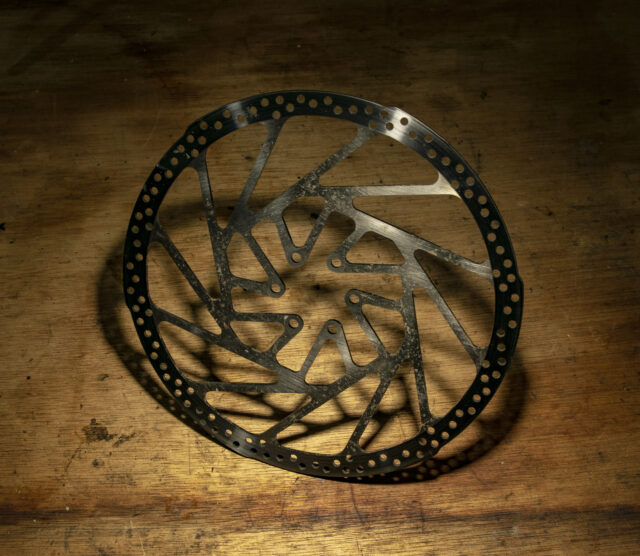
As per usual for TRP, the Trail Evo brakes use mineral oil for the brake fluid. TRP recently reformulated their mineral oil and says that the new composition has both a higher boiling point and a lower viscosity, which improves lever feel and makes for easier bleeding.
The Trail Evo uses a substantially different lever body than the Slate T4, but the lever blade itself is shared between both brakes — as well as the DH-R Evo — and was designed with input from Aaron Gwin. It’s nicely shaped for one-finger braking, and is about middle of the road when it comes to thickness — not quite as broad and flat as the Sram Code or Hayes Dominion levers, but a little more so than Shimano’s XT and XTR, for example. A mix of perforations and dimples adds some texture to the lever blade for improved grip. As I noted in my review of the Slate T4, the lever blade on the Trail Evo is a bit longer than average, which meant that I needed to move the brake lever clamp slightly more inboard on the bar than I do with many other brakes. This in turn pushed the shifter and dropper post lever slightly more inboard (I tested the Trail Evo with separate clamps for all the controls, though various options for integrated clamps are also available) but not so far that I had trouble reaching either.
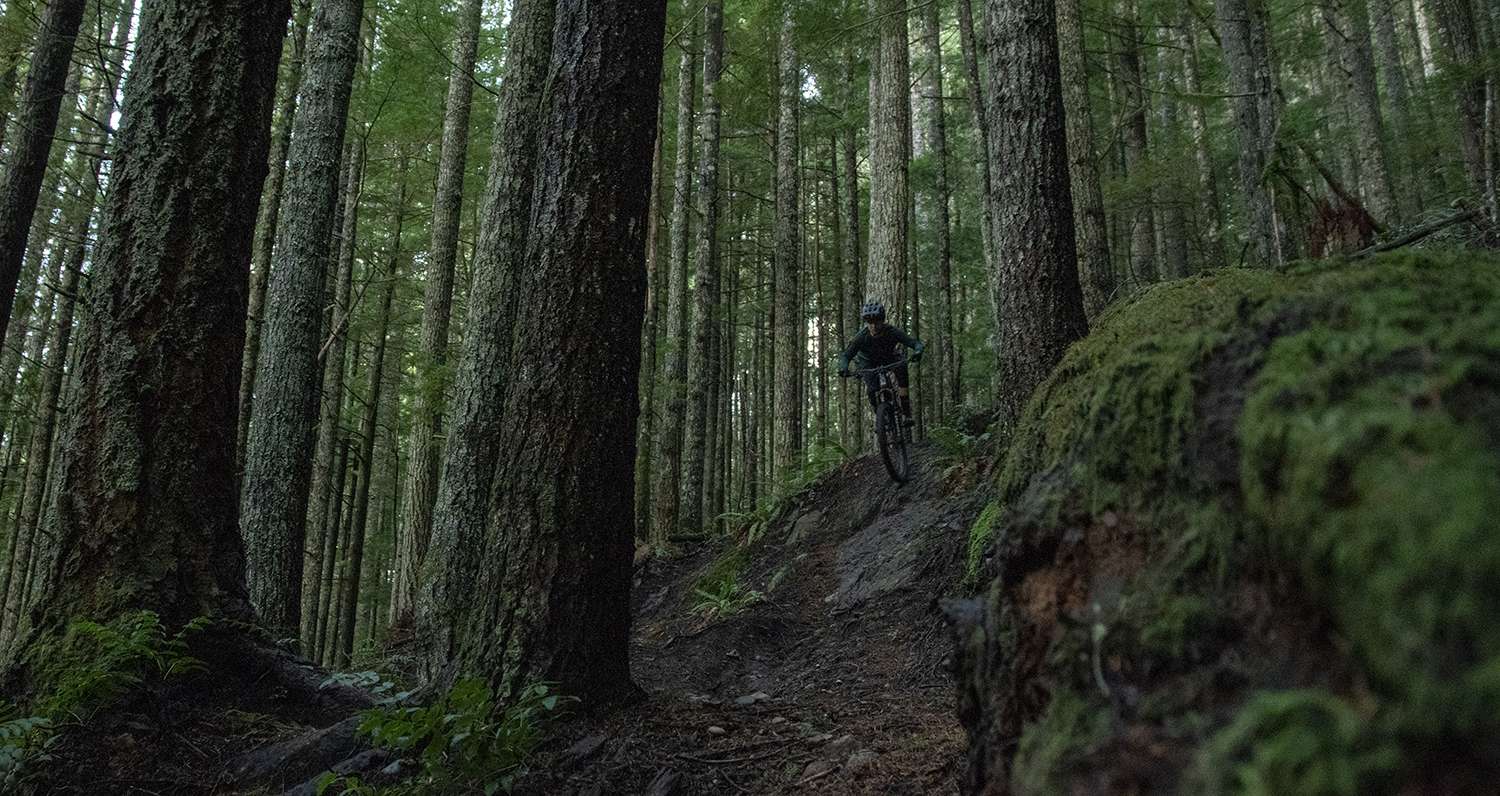
Setup
Like the Slate T4 brakes that I tested earlier this year, the Trail Evo uses TRP’s outstanding EZ-Plug system for connecting the brake hose to the lever. In short, the Trail Evo brakes come with the levers disconnected from the hoses, but with everything filled with fluid and pre-bled. Both the lever and hose have a threaded plug installed to seal them off, and the plug on the hose is small enough diameter to fit through any internal routing ports you might need to deal with. You run the hose through the frame, bolt the caliper into place, cut the hose to length, install new fittings in the cut end of the hose, and then connect it to the lever. A minor lever-end bleed might be required if you spill a little fluid in cutting the hose, but overall it’s a very easy process.
In particular, being able to route the hose with the line bled and plugged is a huge boon on bikes with internal brake routing. Of course, I’ve got another idea for how to address that particular headache, but good on TRP for coming up with a quality solution of their own.
On the Trail
When I reviewed the Slate T4 earlier this year, I found that the lever feel and consistency were both very good, but the outright power left a bit to be desired. Given their comparatively modest price, the Slate T4s are commendably solid performers, but they’re well short of a number of (generally higher-end, more expensive) four-piston Trail bike brakes. The Trail Evo is a clear improvement on that front — the lever feel and consistency are again excellent, but they come with substantially more outright power as well. The lever throw is very short and the contact point well defined and direct — all good things in my book.
To compare them to some of their main competitors, the Trail Evo doesn’t have quite as much outright power as Shimano XTs or Magura MT5s, but significantly more than the SRAM G2 RSC. The lever throw of the Trail Evos is by far the shortest of the bunch. Their power is a notable tick down from the stronger DH options, such as the Shimano Saint and Hayes Dominion A4, but isn’t far off the SRAM Code RSC and edges out the Code R.
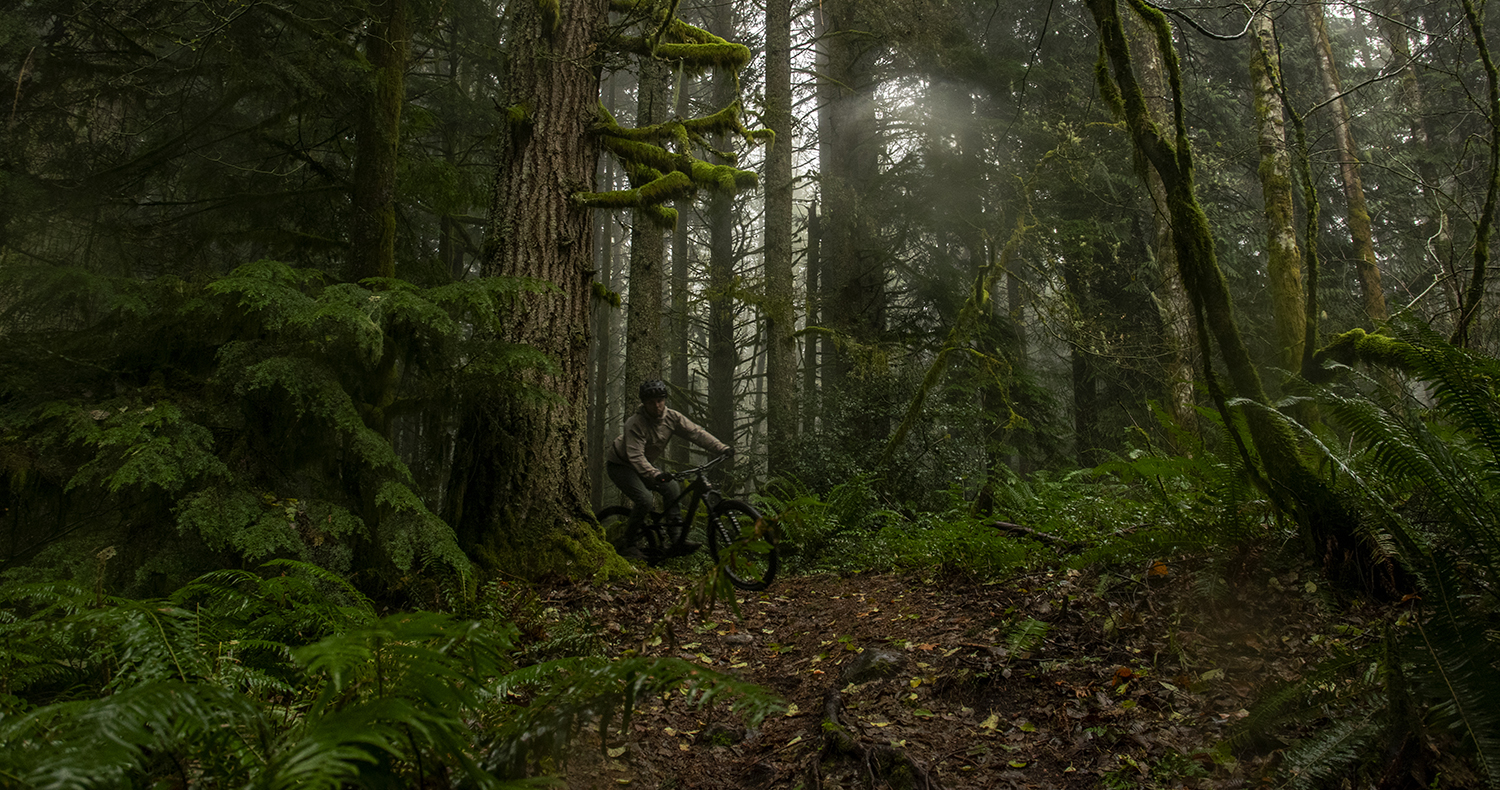
And while the lever throw is short and the bite point quite firm, the power delivery of the Trail Evo is impressively linear. Shimano’s SLX/XT/XTR brakes have some of the firmer bite points on the market but also ramp up in power much more abruptly as soon as they engage. The Trail Evo lever firms up quickly and positively once the brake engages, but continues to build power smoothly and consistently as you apply more force at the lever. I’m not usually one to complain about brakes lacking modulation, but the way the Trail Evos meter out their power is really excellent.
The heat management of the Trail Evos is also quite good. I spent a portion of the test period running them with the 2.3 mm thick, 223 mm diameter rotors that TRP supplied for the test, as well as a spell with TRP’s standard 1.8 mm thick rotors, in a 203/180mm size combo so that I could more directly compare their performance to that of their competitors. The bigger rotors, unsurprisingly, helped with both power and heat dissipation, but both are quite respectable even with more typical rotor sizes. I’ve taken the Trail Evos down a number of steep, sustained descents that have thoroughly cooked lesser brakes, and they held up commendably.
There’s one specific element of the Trail Evos that let me down, though, and that’s the reach adjuster — the range of adjustment on offer simply doesn’t make any sense. I admittedly like to run my brakes relatively close to the bar, but I’m not able to get them nearly as far in as I’d like to. At the other end of the range, they’re comically far out. I wear either an XL or XXL glove, and can barely hook the tip of my finger around the lever at all when they’re adjusted all the way out. I can’t imagine anyone wants or needs that end of the adjustment range, but I’d gladly bring them in substantially farther if it were an option. The gallery below shows the lever position at the two extremities of the adjustment range — both with the lever fully extended and at the bite point. And bear in mind that my hand takes an XL or XXL in most gloves, for scale.
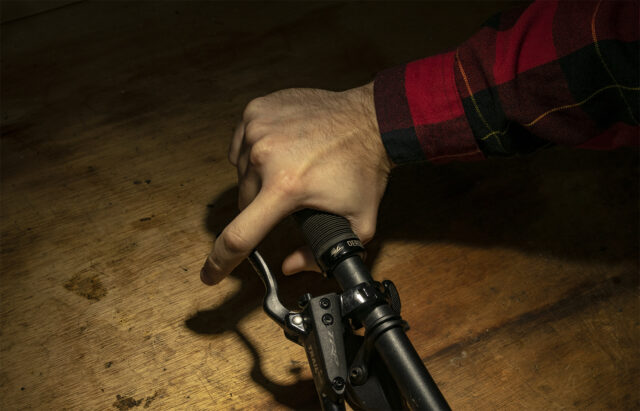
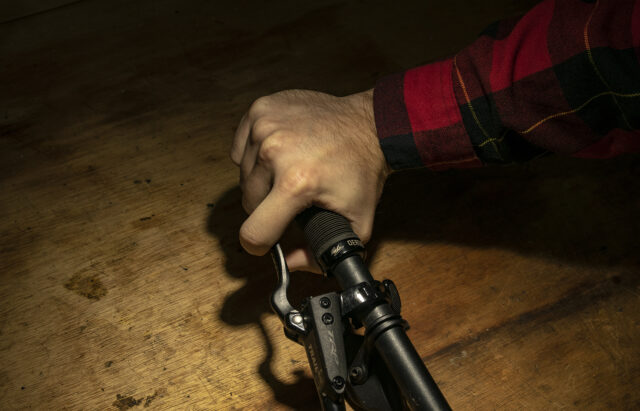
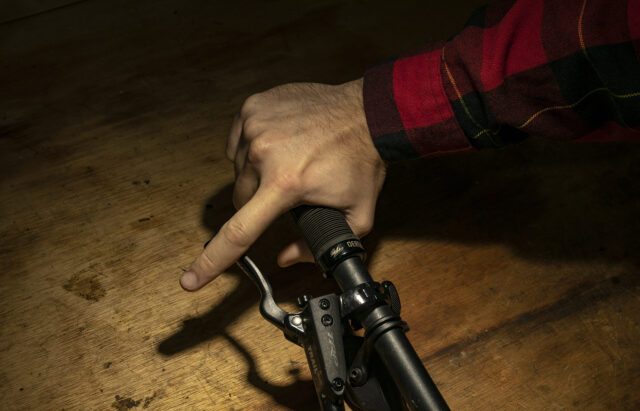
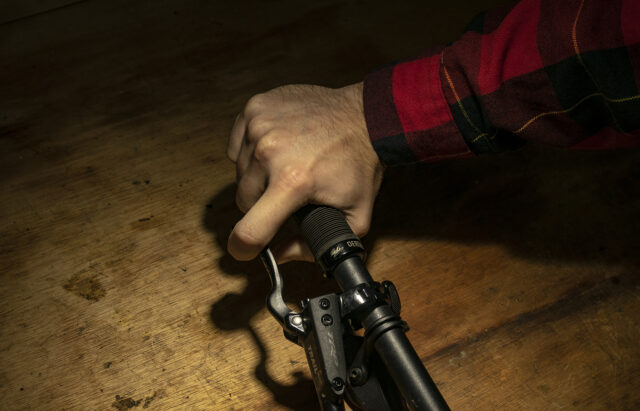
With the levers that far out, I’m not able to grip the bar as firmly as I’d like, and that takes its toll on my hands and forearms on longer descents, especially on really big days where I’m stringing several together. And again, I do think that I prefer to run my levers closer to the bar than a lot of people. I bet this will be a problem for some people and not for others — but I still can’t imagine any people who want to run the levers at the maximum reach the Trail Evo offers.
Though the Slate T4 uses the same lever blade as the Trail Evo, I didn’t have the same issue with that brake — because the Slate T4 positions the lever pivot much closer to the bar, and therefore the range of adjustment is closer as well. I’d love to see TRP come out with an alternate short-reach version of the lever blade that could be retrofitted to the Trail Evo because they’re very good brakes otherwise, but the lever adjustment limitation is a major limitation for me.
I’ve been on the record as saying that I don’t find contact point adjusters to be of much use on brakes — read my review of the Hayes Dominion A4 for more on that — and while an adjuster like that might help address my gripe with the reach on the Trail Evo, it would be a band-aid fix. I like the short stroke and firm engagement a lot. I just wish it all happened closer to the bar. That said, riders who prefer a long-stroke brake should definitely look elsewhere — there’s no such adjustment on the Trail Evo, and the stroke is notably short.
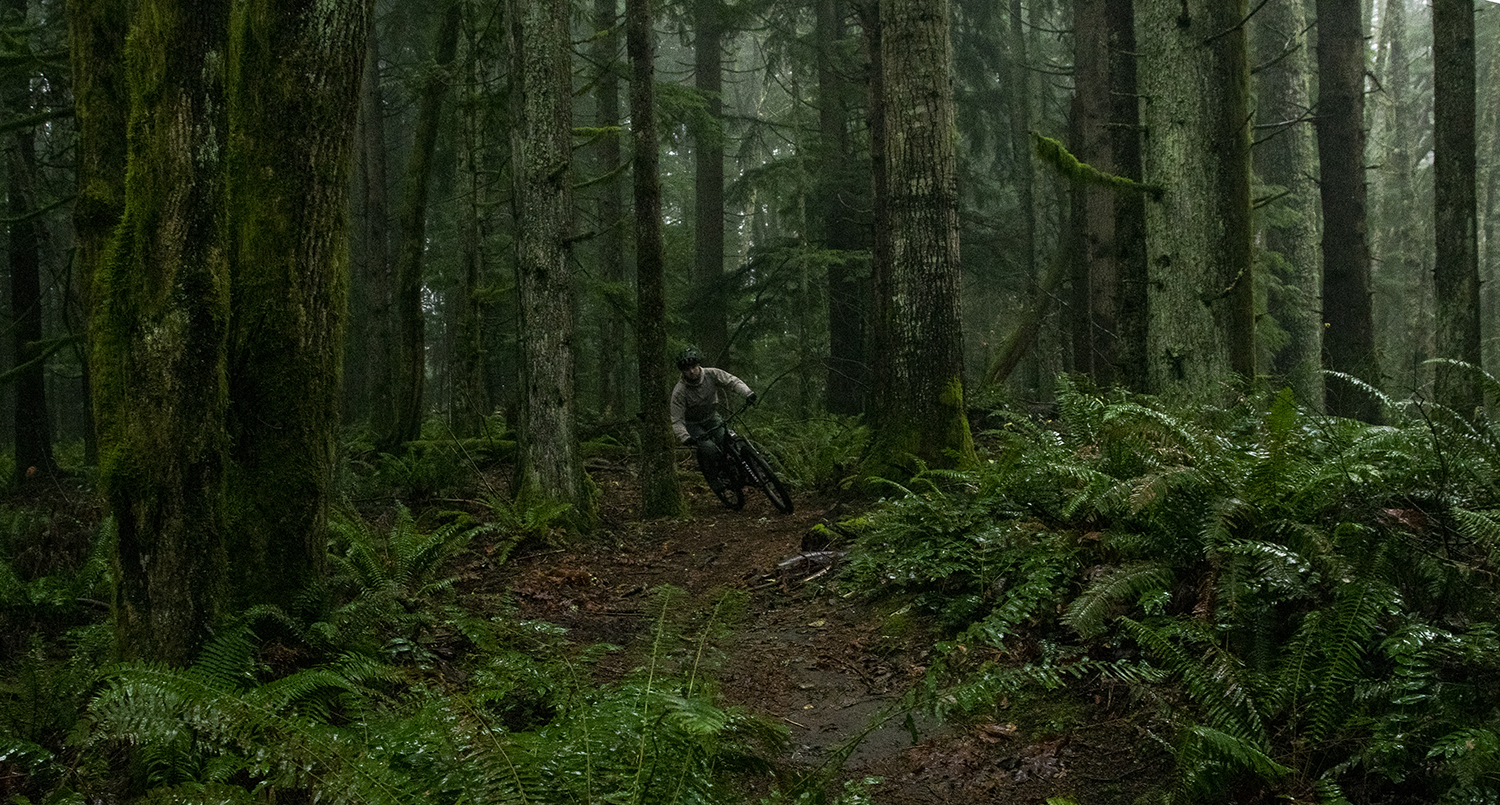
Bottom Line
TRP’s new Trail Evo brakes are a very promising contender in the Trail brake market, with good power and excellent consistency and lever feel. They’re only let down by a baffling range of reach adjustment that’s overall much too far out from the bar, and that inability to get the lever as close to the bar as I’d like is a major downside. Folks who like to run their brake levers relatively far out shouldn’t have an issue, though, and if you fall into that camp and like the sound of a short stroke and firm bite point with good consistency and heat management, the Trail Evos are worth a look.

Hi David, thanks for the nice review.
I may not see it clearly on the pictures, but it seems that you are braking a bit different than i do in terms of finger position. I mean, i brake between the distal and the middle phalanx of the finger and on the pictures its more like between the middle and the proximal phalanx. Maybe that this could also be an issue for shorter reach to the levers. But this is just very hypothetical.
Great work of you guys at blister!!!
Although spendy, freedom coast makes a lever for trp that brings the lever reach in.
I have loved these brakes on my canyon spectral 125. I also have DHRs on my cascade link spire.
These are great products.
Hey Rob,
How do the Trail and DH-R compare?
Thanks!